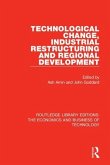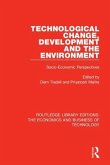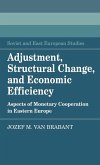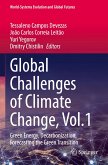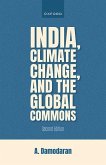This book offers a new perspective in studying contemporary development. Part I explores how the ending of the cold war, shifting relations among capitalist powers, changing patterns of finance, globalization of trade and production, and new ideological currents have altered development in four major third-world regions. Part II suggests how development options were molded by the dominant international power in each region: the United States in Latin America, Japan in East and Southeast Asia, and Europe with the international financial institutions in Africa. Part III provides a conceptual framework for analyzing regional performance: variation in economic capacity, trade opportunities, and access to finance shaped the development chances of each region, producing rapid growth in Asia, stagnation in Latin America, and economic contraction in sub-Saharan Africa during the 1980s and early 1990s. It also speculates about future trends based on varying development models.
Table of contents:
List of tables; List of figures; Acknowledgements; 1. Introduction: global change, regional response Barbara Stallings; Part I. Global Changes: 2. The Third World and the end of the Cold War Fred Halliday; 3. Capitalisms in conflict? The United States, Europe, and Japan in the post-Cold War world Barbara Stallings and Wolfgang Streeck; 4. Global production systems and Third World development Gary Gereffi; 5. New global financial trends: implications for development Stephany Griffith-Jones and Barbara Stallings; 6. The 'triumph' of liberal economic ideas in the developing world Thomas J. Biersteker; Part II. Regional Responses: 7. The East Asian NICs: a state-led path to the developed world Yun-han Chu; 8. Southeast Asia: success through international openness Linda Y. C. Lim; 9. Latin America: toward a new reliance on the market Augusto Varas; 10. Sub-Saharan Africa: underdevelopment's last stand Michael Chege; Part III. Conclusions: 11. The new international context of development Barbara Stallings.
This book offers a new perspective in studying contemporary development. Part I explores how post cold war development was altered in four third-world regions. Part II suggests how development options were molded by the dominant international power in each region. Part III provides a conceptual framework for analyzing regional performance.
This book offers a new perspective in studying development in the post cold war world.
Table of contents:
List of tables; List of figures; Acknowledgements; 1. Introduction: global change, regional response Barbara Stallings; Part I. Global Changes: 2. The Third World and the end of the Cold War Fred Halliday; 3. Capitalisms in conflict? The United States, Europe, and Japan in the post-Cold War world Barbara Stallings and Wolfgang Streeck; 4. Global production systems and Third World development Gary Gereffi; 5. New global financial trends: implications for development Stephany Griffith-Jones and Barbara Stallings; 6. The 'triumph' of liberal economic ideas in the developing world Thomas J. Biersteker; Part II. Regional Responses: 7. The East Asian NICs: a state-led path to the developed world Yun-han Chu; 8. Southeast Asia: success through international openness Linda Y. C. Lim; 9. Latin America: toward a new reliance on the market Augusto Varas; 10. Sub-Saharan Africa: underdevelopment's last stand Michael Chege; Part III. Conclusions: 11. The new international context of development Barbara Stallings.
This book offers a new perspective in studying contemporary development. Part I explores how post cold war development was altered in four third-world regions. Part II suggests how development options were molded by the dominant international power in each region. Part III provides a conceptual framework for analyzing regional performance.
This book offers a new perspective in studying development in the post cold war world.



